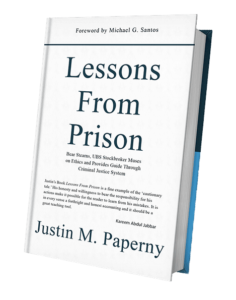For most people in federal prison, the transition home occurs in gradual stages, starting with time in a halfway house (aka Residential Reentry Center) and then transitioning to home confinement.
Creating a robust release plan (assuming you want more liberty) is crucial for preparing for this phase.
Access to the halfway house changed significantly in 2008 when President Bush signed the Second Chance Act. Among other initiatives, the Act provided a particularly appealing benefit for those who served time: an opportunity to leave federal prison sooner!
Before the Act, the Bureau of Prisons (BOP) could authorize up to the final six months of a sentence in a halfway house. With the Second Chance Act, Case Managers could transfer eligible individuals to community confinement for up to the final year, allowing the final six months under home confinement conditions.
Too many prisoners assumed case managers would give them “more time” since the law changed. They were wrong. Many case managers were opposed to the change and frowned at the idea of letting people out earlier.
Applying for the Halfway House:
Before even inquiring or applying for more halfway house time, prisoners should share their release plan with their case manager. Rather than telling a case manager what they have learned, they can SHARE their work and progress. Logic suggests a case manager will be more inclined to reward someone who is actually doing the work-life generally works that way!
Warning: As I expressed in this Live YouTube video, if you create a release plan, make sure you follow through on your commitments.
Case managers consider each person separately, taking into account factors outlined in Title 18 United States Code, Section 3621(b). These factors include the facility’s resources, the nature and circumstances of the offense, the person’s history and characteristics, any relevant court statements, pertinent Sentencing Commission policy statements, and yes, you got it it, the release plan!
Having a solid release plan could make a significant difference in securing the maximum allowable time in a halfway house. We strongly encourage people to create their release plans well ahead of time—ideally before beginning their sentence.
Eligibility for Halfway House:
Certain people might be ineligible for halfway house placement due to the nature of their offenses, such as those with violent criminal histories or ties to organized crime. Case managers might also exclude people who have received numerous disciplinary infractions, failed to participate in mandatory programs, have pending criminal charges, or face deportation.
Despite these restrictions, many people will qualify for halfway house placement at the end of their sentences if they desire it. The question is how much time they will get. Creating a thorough release plan helps ensure they can effectively advocate for their transfer to the halfway house as soon as possible.
Living Quarters and Security in The Halfway House:
Halfway houses vary in structure and rules. People might have access to televisions, cell phones, and personal clothing. They might also drive if permitted. Security measures include surveillance cameras and various accountability metrics, emphasizing the importance of a well-considered release plan.
Drug or Counseling Programs: Participation in ongoing counseling and other rehabilitative programs is often required, reinforcing the need for a disciplined approach to the halfway house experience.
From The Halfway House to Home Confinement:
Home Confinement represents another layer of community confinement. It typically begins in a halfway house, and after assessments, eligible people transition to home confinement. The Second Chance Act allows for up to the final six months of a sentence to be served this way.
I know this is a lot to take in. If you have questions, feel free to call or text us at 704-654-1604. We are here to help.
Justin Paperny
P.S. As you continue preparing, consider these questions:
1: How would time in a Residential Reentry Center influence your life?
2: If you were in a Residential Release Center, how would you explain the situation to a prospective employer?
3: If you know a release plan can help you, what is stopping you from creating it?




